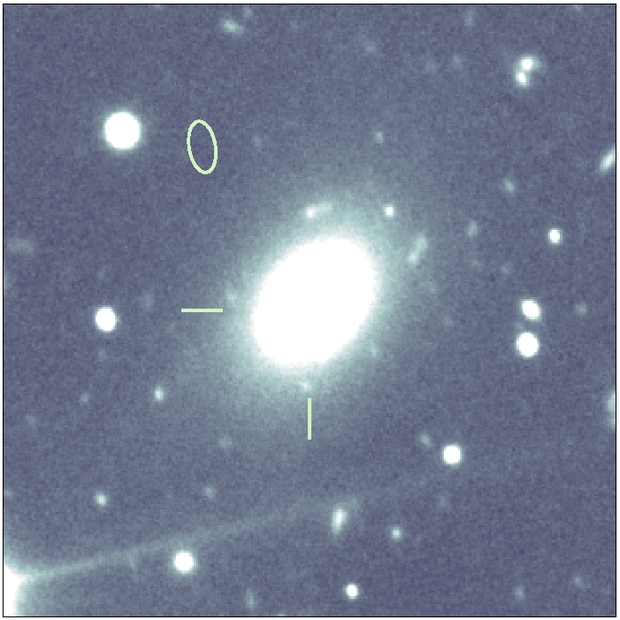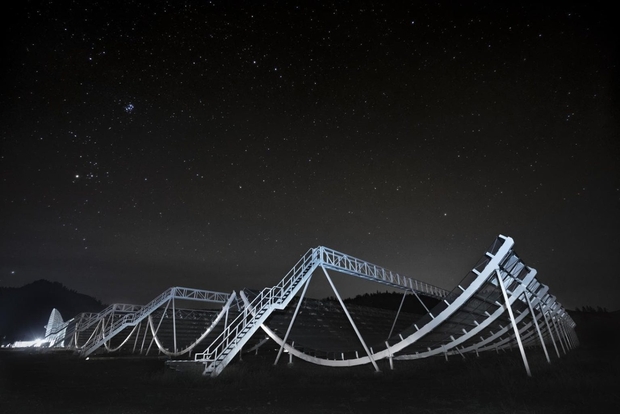Work is healing, so let’s get back to it. I’m enthralled with what we’re discovering as we steadily build our catalog of fast radio bursts (FRB), close to 100 of which have now been associated with a galaxy. These are transient radio pulses of short duration (down to a fraction of a millisecond, though some last several seconds), the first being found in 2007 by Duncan Lorimer, an astronomer at West Virginia University. Sometimes FRBs repeat, although many do not, and one is known to repeat on a regular basis.
What kind of astrophysical processes might be driving such a phenomenon? The leading candidate appears to be supernovae in a state of core collapse, producing vast amounts of energy as stars more massive than the Sun end their lives. Out of such catastrophic events a type of neutron star called a magnetar may be produced, its powerful magnetic field pumping out X-ray and gamma ray radiation. Young, massive stars and regions of active star formation are implicated under this theory. But as we’re learning, magnetars are only one of a possible range of candidates.
For the event known as FRB 20240209A, detected in 2024 by the Canadian Hydrogen Intensity Mapping Experiment (CHIME), has dealt us a wild card. Remember, a single FRB can produce more energy in a quick burst than our Sun emits in an entire year. This one has repeatedly fired up, producing 21 pulses between February and July of last year. And the problem with it is that it has been traced to a galaxy in which star formation has ceased. That finding is verified by data from the Gemini North telescope and the Keck Observatory using its Low Resolution Imaging Spectrometer (LRIS).
Yuxin (Vic) Dong is an NSF Graduate Research Fellow and second author on one of two papers recently published on the event:
“For nearby galaxies, there is often archival data from surveys available that tells you the redshift — or distance —to the galaxy. However, in some cases, these redshift measurements may lack precision, and that’s where Keck Observatory and the LRIS instrument becomes crucial. Using a Keck/LRIS spectrum, we can extract the redshift to a very high accuracy. Spectra are like fingerprints of galaxies, and they contain special features, called spectral lines, that encode tons of information about what’s going on in the galaxy like the stellar population age and star formation activity. What’s really fascinating in this case is that the features we saw from the Keck/LRIS spectrum revealed that this galaxy is quiescent, meaning star formation has shut down in the galaxy. This is strikingly different from most FRB galaxies we know which are still actively making new stars.”

Image: The ellipse shows the location of the FRB and the crosshairs point to its host galaxy, taken with the Gemini North telescope from Maunakea. Credit: Shah et al.
It turns out that FRB 20240209A is coming from a galaxy fully 11.3 billion years old some 2 billion light years from Earth. This is painstaking work and quite productive, for the papers’ authors report that the galaxy is both extremely luminous and the most massive FRB host galaxy yet found. Moreover, while FRBs that have been associated with their host galaxies are usually located deep within the galaxy, this one occurs 130,000 light years from galactic center, in a region with few stars nearby.
When you’re dealing with a new phenomenon, finding similar events can be productive. In this case, there is one other FRB that can be placed in the outskirts of a galaxy, the spiral M81. While FRB 20240209A occurred in an ancient elliptical galaxy, it like the M81 event is far from areas of active star formation, again raising the possibility that FRBs have causes we have yet to pin down. From the Eftekhari et al. paper:
Since the first host associations, investigations into FRB host demographics have offered valuable insights into the origins of FRBs and their possible progenitor systems. Such studies remain in their infancy, however. With the development of interferometric capabilities for various FRB experiments and the promise of hundreds of precisely localized events, the discovery landscape for new and unforeseen hosts and environments presents considerable potential.
And as the paper notes, FRB 20240209A isn’t the first FRB that challenges our assumptions:
Indeed, the connection of a few FRBs with remarkable environments, including dwarf galaxies (S. Chatterjee et al. 2017; C. H. Niu et al. 2022), a globular cluster (F. Kirsten et al. 2022), and the elliptical host of FRB 20240209A, implicate exotic formation channels as well as older stellar populations for some FRBs and demonstrate that novel environments offer significant constraining power for FRB progenitors. A larger sample of host associations will further uncover intriguing diversity in host environments and may identify interesting subpopulations or correlations with FRB repetition, energetics, or other burst characteristics, contributing to a clearer understanding of FRB origins.

Image: CHIME detectors. Credit: CHIME, Andre Renard, Dunlap Institute for Astronomy & Astrophysics, University of Toronto.
Clearly we have a long way to go as the FRB catalog grows. Senior author Wen-fai Fong, who was involved in both papers, likes to talk about the surprises the universe has in store for us, disrupting any possibility of scientific complacency. Instead, we are often confronted with yet another reason to revise our thinking, in what Fong refers to as “a ‘dialogue’ with the universe” as we pursue time-domain astronomy, the analysis of changes in brightness and spectra over time so suited for mysterious FRBs.
The papers are Shah et al., “A repeating fast radio burst source in the outskirts of a quiescent galaxy,” Astrophysical Journal Letters Vol. 979, No. 2 (21 January 2025) (full text) and Eftekhari et al., “The massive and quiescent elliptical host galaxy of the repeating fast radio burst FRB 20240209A,” Astrophysical Journal Letters Vol. 979 No. 2 (21 January 2025). Full text.



The FRB’s could be from magnetars, but also Supermassive black holes magnetic fields destablizing a pulsar’s magnetosphere making FRB’s, collisions with two white dwarfs, neutrons stars, black holes, etc, Google AI. If the FRB’s are so continuous, magnetars and supermassive black holes might make most of the FRB’s? The frequency of the FRB’s might indicate the source like higher energy FRB for a strong magnetic field like from a magnetar. Ibid.
It isn’t impossible that a FRB-capable compact object and a similarly compact companion could form and interact far out in the galactic halo. I suppose it’s more likely to be a super/hyper-nova of some kind that, if that overexposed picture was taken soon after the FRB, would be a core collapse to form a BH, with no optical emissions. Or a purely radio event, as speculated, such as a compact object interacting with a magnetar. Definitely curious and intriguing.
A bit OT, I wonder what it would be like to be the last civilization in a dead galaxy?